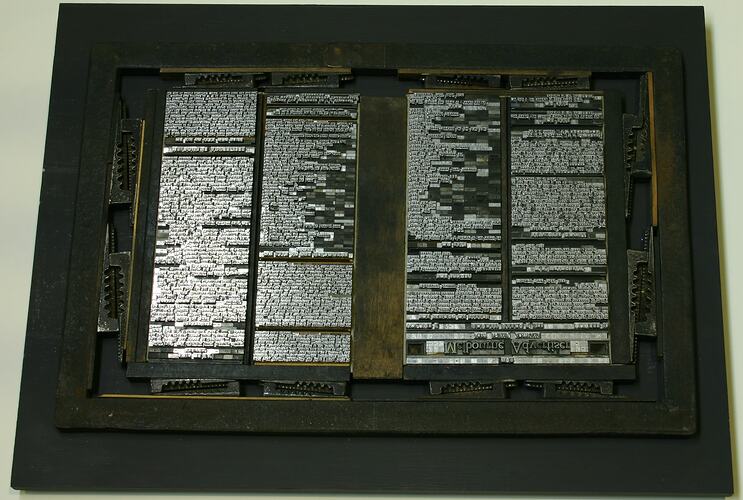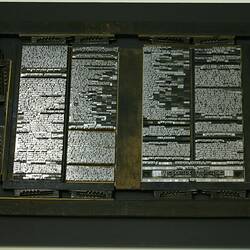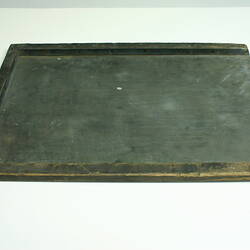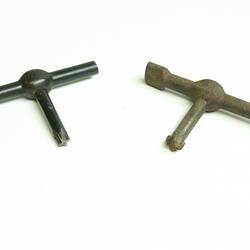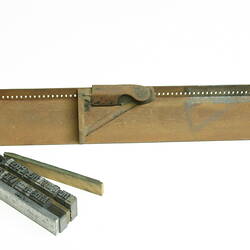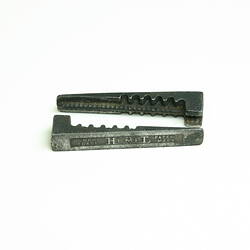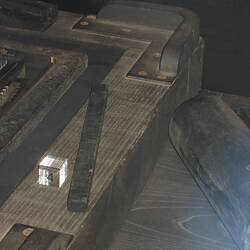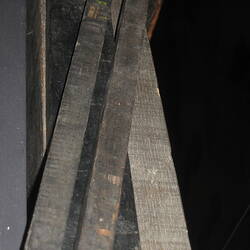The wooden press has two vertical pillars, known as 'cheeks', with a crossbeam, through which a vertical spindle with a screw is fixed. The spindle is held in place by a second crosspiece known as the 'till'.
A lever turns the screw and the spindle lowers to a wooden platen, which is forced down onto the inked forme, creating the impression on the paper.
The inked forme sits on a stone that sits inside a wood frame known as the 'coffin'; the coffin sits on what is known as the bed.
The missing tympan is affixed by hinge to the coffin, and the missing frisket is hinged to the missing tympan. When opened out the tympan rests on a rack fixed to the bed known as the gallows. This holds the tympan and frisket so it can be worked by the pressman. The paper is placed on the tympan; the frisket is brought down to cover and hold the sheet in place on the tympan and the whole is folded over the forme. The tracks on the carriage are just that.
The whole assembly is wheeled, courtesy of a rounce connected by straps to either end of the bed, under the platen and the platen is brought down by turning the screw with the lever. After impression the lever is returned raising the platen.
The forme is wheeled further under the platen, and the process repeated.
It took two pulls or impressions to print a newspaper.
More Information
-
Keywords
-
Authors
-
Article types
